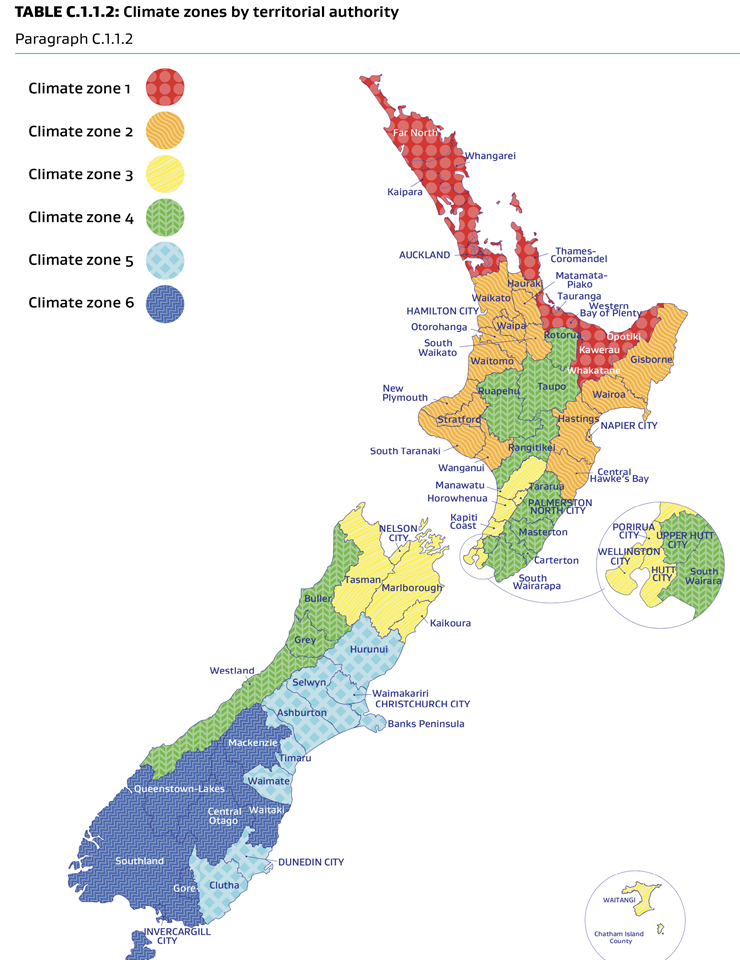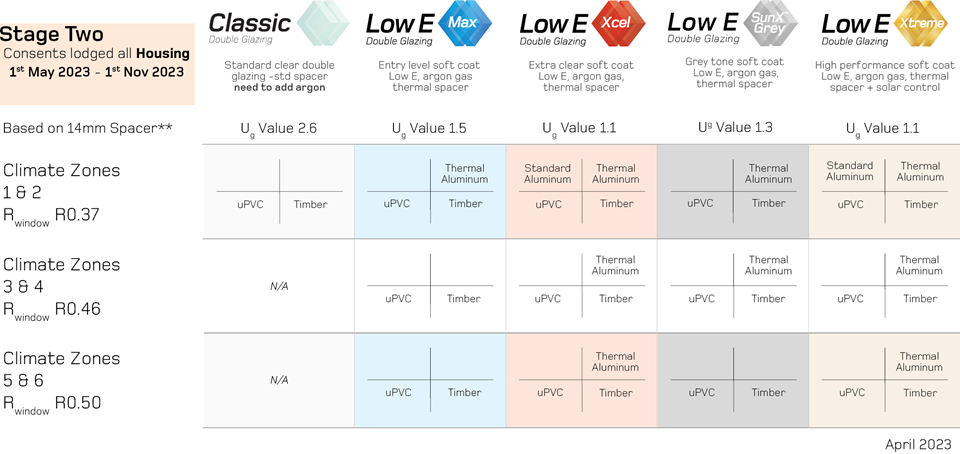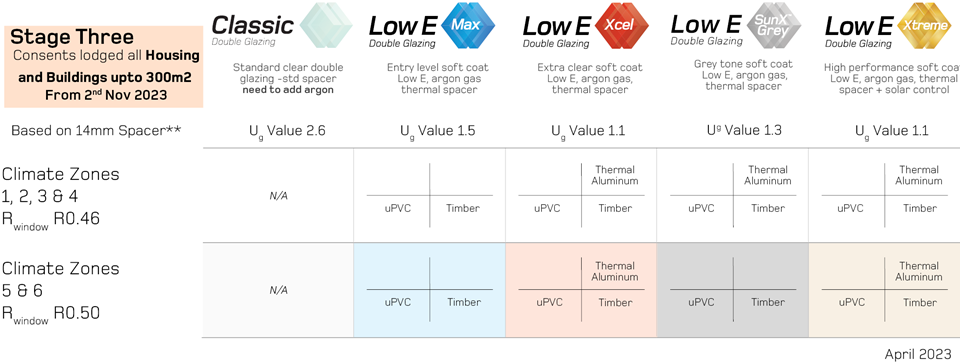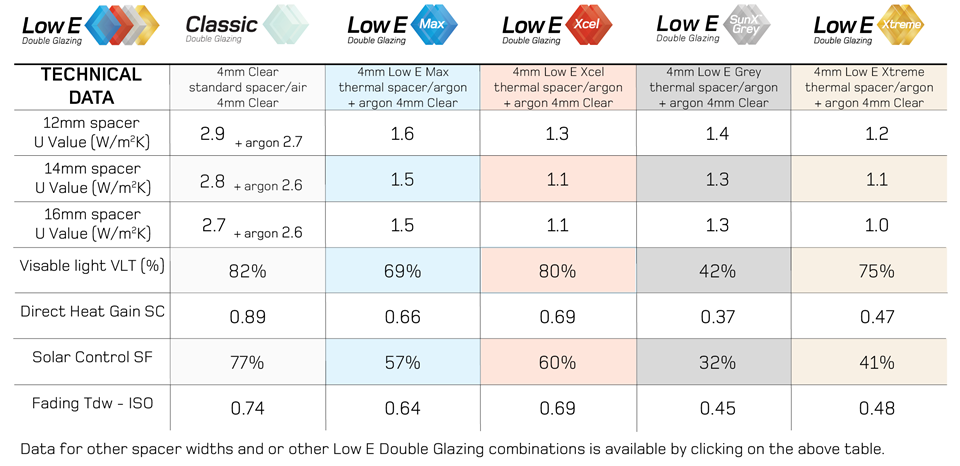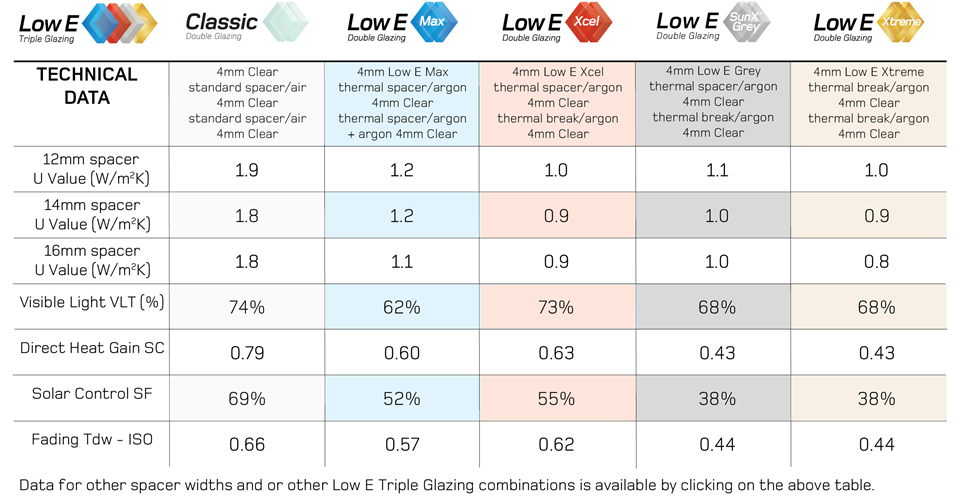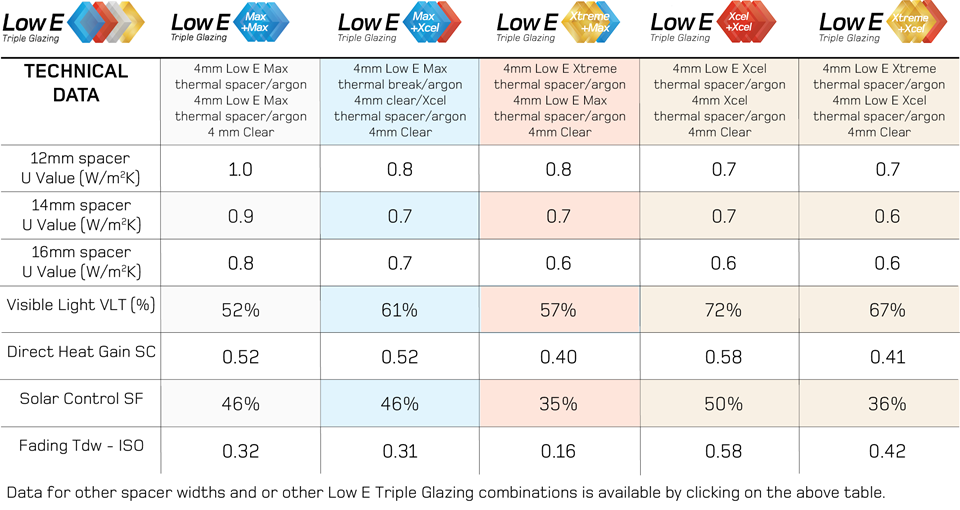WINDOW GLASS SPECIFYING
LOW E RESIDENTIAL DOUBLE & TRIPLE GLAZING SELECTION
When selecting the right double or triple glazing for your home one of the main considerations is generally around keeping your home warm in winter.
The minimum thermal performance (keeping a home warm) for housing is changing for building consents lodged after the 3rd Nov 2022. Along with new climate zones this will see a jump in the thermal performance for windows in new homes and will vary depending on the climate zone of the build.
The MBIE map below illustrates the Climate Zones and Territorial Authority Boundaries, to use the Window and Glass Association NZ reference guide click on the map and simply add your Territoral Authority and consent date.
MBIE Territorial Authority List
The NZBC sets the minimum R window value for the combined double glazing and frame type. Be that Aluminium, Thermal Break Aluminium, uPVC, Timber, or any other window frame type.
This minimum R window values vary across the 6 new climate zones. However, the final implementation of the NZBC in Nov 2023 ends up with two groupings Climate Zones 1-4 and Climate Zones 5&6.
The general principal is that higher thermal performing Low E double glazing can use a less thermally efficient window frame system. While correspondingly a higher thermally efficient window frame system can use a lower thermal performance glazing to meet the minimum R window values.
In the selection of the window system type, there are typically other considerations on top of the thermal performance such as appearance, hardware, durability, maintenance price etc. So, it is often easier to upgrade the double glazing.
For ease of specification Low E Xcel Double Glazing with a 14-16mm spacer meets the minimum glass requirements in the appropriate frame for the three stages of implementation.
The table below shows the minimum Rwindow value by climate zone, generic window system and the Low E glass types that meet the minimum requirements for housing using the H1/AS1 schedule. The Schedule method is the simplist path to compliance for upto 30% window to wall ratio covering the majority of new housing in New Zealand.
Click on either of the diagrams below to link through to the H1/AS1 Table for generic vertical windows and doors.

LOW E TECHNICAL SPECIFICATION
This following tables represents a snapshot of the Double and Triple Glazing range options and their relative performance data compared to each other.
As the tables illustrate high performance Low E is the key driver of thermal performance followed by the gas, spacer width, spacer type and glass thickness. I.e. a Low E Plus unit will achieve the same thermal performance number of U value of 1.9 at 20mm thick versus a Classic Triple Glazed unit of 36mm. The use of Low E Xcel at 14mm spacer allows the continued use of a standard Aluminium frame through the first stage of the code change.
Triple glazing is not required to meet the minimum requirements of the NZ Building Code for any of the three stages of implementation across all climate zones. Triple Glazing is most effective for specifying that requires Ug values below 1.0.
Glass thickness makes very little difference in the table numbers above. However thicker glass can be critical for wind loads and safety. Generic wind load information is available here. For safety requirements please refer to NZS 4233 here.

It should be noted that a narrow spacer will reduce the thermal performance, i.e. 8mm and 10mm spacers are often used in retrofit double glazing situations with narrower glazing pockets. More modern glazing suites in new windows can accommodate spacer widths of 14-18mm. This is ideal for the Argon Gas as the optimal spacer width is 16mm so slightly higher thermal performance numbers are possible than listed above.
Note Argon gas does not change the VLT, SF or Tdw-ISO performance of the units.
For the full data select either Double Glazing or Triple Glazing technical brochures.
For processing capability click here
The infographic below shows the relative performance of double glazing options, plotted by keeping your home warm in winter and cool in summer, the bottom right corner represents the best for both.
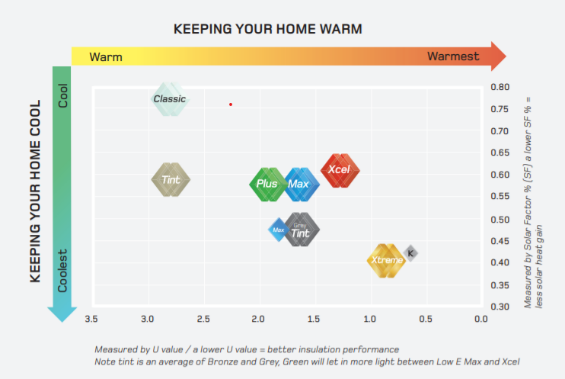
In selecting the right double glazing for a home, consider the balance of letting in as much light as possible and not having a house that overheats unduly fades furniture and fittings. The two diagrams below show the trade offs of letting in more light and keeping the home cool.
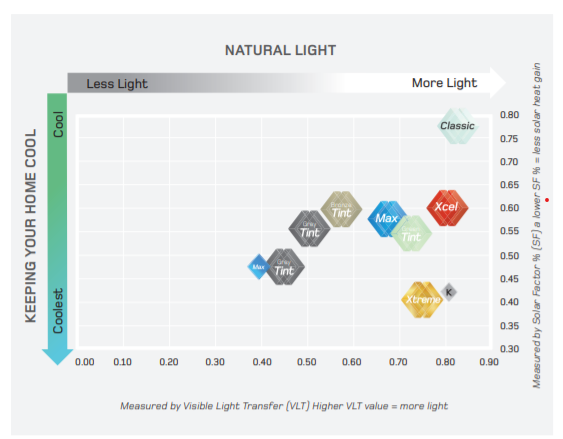
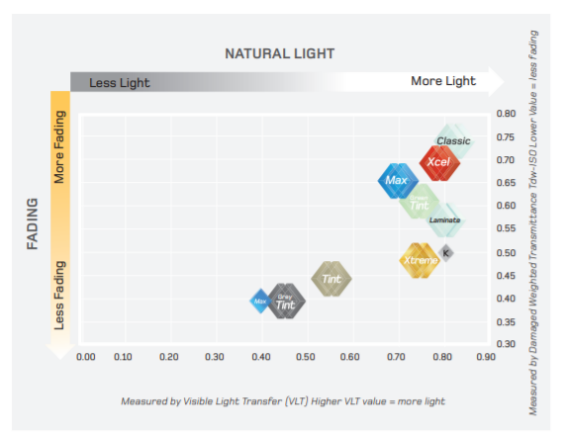
USEFUL LINKS
MBIE documents as follows:
- H1 Energy Efficiency Acceptable Solutions H1/AS1 Energy efficiency for all housing and buildings up to 300m2
- New Zealand Green Building Council Homestar
- Superhome Movement
- Passive House Institute New Zealand
DOUBLE & TRIPLE GLAZING QUALITY
As Double and Triple Glazing has a finite life span the quality of manufacture and testing standards are of critical importance when choosing a supplier. Metro Performance Glass Double Glazing units are regularly tested by BRANZ compliant to EN1279.
The Window and Glass Association Provides and Guide available through the following link:

